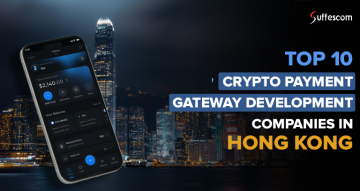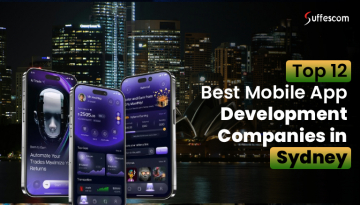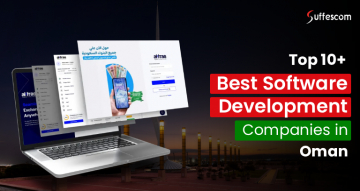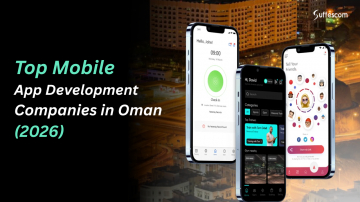How Much Does It Cost To Build A Fuel Delivery App?

Fuel delivery app development cost typically ranges between $8000-$15000, based on numerous factors.
By 2035, the fuel delivery market is anticipated to reach USD 11,927.6 million with a CAGR of 7.42% (2025-35). The key players in the fuel delivery market are Continental AG, Magna International Inc., Keihin Corporation, etc. Moreover, the top performing regions include North America, Europe, Asia Pacific, Latin America, the Middle East & Africa.
All these numbers compel entrepreneurs to catch up with the trend and invest in lucrative fuel delivery app development. Without taking much time, let's explore the intricacies surrounding the on demand fuel delivery app cost.
Factors Influencing The Fuel Delivery App Development Cost
The overall budget of the fuel delivery app is decided on specific parameters, depending on which, a rough estimation is created. Below we have illustrated the most important ones as under;
1. Complexity
It involves the level of difficulty surrounding designing, developing, and maintaining the app with necessary integrations to elevate the scalability at all levels. For this, the developers must create code from scratch, which takes considerable time and effort. Moreover, numerous operational complexities arise due to the increased traffic and additional security vulnerabilities.
| Fuel Delivery App Type | Fuel Delivery App Development Cost |
| Basic App | $8000-$10,000 |
| Medium App | $10,000-$12,000 |
| Highly Complex App | >$12,000 |
2. UI/UX Design
The interface is the most fascinating element that entices the user's attention, automatically making it a high investment. The prime facets that engage customers big time are the visually appealing components, easily navigable menus, and drop-down options. So, the money invested needs to be equally high to meet every aspect.
Fuel Delivery App Development Cost!
Schedule a free consultation with our team and get a detailed project cost breakdown in simple steps.
3. Choice Of Platform
A reliable mobile app development company can help pick the appropriate platform, be it native or cross-platform, depending on the project requirements. Understanding the target audience, analyzing the goals, and contemplating the functionalities to be included are pivotal factors in building apps.
4. Feature Integrations
The addition of attributes significantly impacts the fuel delivery app cost. The platform with minimal features obviously charges less than the one with extensive features. Below, we have mentioned some of them.
1. Admin and Driver Management
The app features a backend setup for driver management, order tracking, and fuel inventory. Admins allocate deliveries, track driver performance, and check fuel stock levels, providing operational effectiveness.
2. Reviews and Ratings
Customers can rate and review their delivery experience, giving feedback regarding service quality. This functionality keeps service standards high and enables other customers to make informed decisions through peer reviews.
3. Receipt History and Order Receipts
The app retains a complete history of previous orders, such as fuel type, volume, delivery point, and price. Users download digital receipts for expense monitoring or reimbursement, providing greater user control and documentation.
4. Fuel Price Transparency
The users can see real-time fuel prices in their locality with taxes and delivery charges. The app can also give price comparisons or discounts based on the user's location, facilitating informed decision-making and cost transparency.
5. Security And Compliance Measures
The fuel delivery apps need advanced security assistance, which is fulfilled by using attributes like advanced encryption protocols and authentication techniques like multi-factor, password, or biometric-based authentication, which enable robust security. The app needs to comply with all legal and industry frameworks and global and local regulations regarding hazardous materials, environmental protection, etc.
6. Geo-Location Of The Development Company
The cost of developing on-demand fuel delivery depends on the development agency's location. Hiring developers from regions like North America and Europe will cost more than hiring those from Asian and Middle Eastern countries. Collaborating with a dedicated fuel delivery app development company with exceptional abilities will help you build a fuel delivery app on a reasonable budget.
7. Technology Stacks
The backbone of any app depends on its architecture and tech stacks, which have an incredible impact on performance. Moreover, they offer a well-structured approach to app development, streamlining the entire business process. Advanced solution stacks need to be acquired to attain the next level of robustness and scalability, directly influencing the budget.
| Aspects | Tech stacks | Description |
| Frontend | React Native, Flutter, Kotlin (Android), Swift (iOS) | For cross-platform and native development |
| Backend | Node.js, Python, Java, Ruby on Rails | For real-time functionality and scalability |
| Database | MongoDB, PostgreSQL | For saving structured and unstructured data. |
| Payment Gateways | Stripe, PayPal, | Supports multiple payment methods |
| Cloud Storage | AWS S3, Google Cloud Storage, Azure | For secure, scalable storage of images, invoices, and logs. |
| Security | HTTPS/SSL, OAuth 2.0, JWT | For user authentication and authorization. |
| Testing Tools | Selenium, Mocha, Jest | For cross-device automated testing. |
8. Development Stages
After deciding on the tech stacks, the next step is to execute the development steps with the utmost precision and care. Feature integration, choosing the compliance measures, building a roadmap, UI/UX design, coding, QA, and deployment require the involvement of subject matter experts and skilled developers, which has a greater impact on the development cost.
| Stage | Description | Development Cost |
| Requirement Analysis | Market research & Regulatory Compliance | Without charge |
| UI/UX Design | Creating Wireframes & Prototypes | $1600-$3000 |
| Development | Handling Frontend & Backend Activities with feature integration | $3000-$7000 |
| QA | Rigorous testing techniques to remove bugs and errors | $2000-$3000 |
| Deployment & Launch | App store submission, cloud server setup | $1000-$1000 |
| Maintenance | Feature updates, security patches | $400-$1000 |
Determine The On Demand Fuel Delivery App Cost For A Hassle-Free Experience
How To Reduce The Fuel Delivery App Development Cost?
The fuel delivery app cost can be subsequently reduced by taking the following steps, which will help businesses to gradually reduce development time and cost. Peek through the ones below;
1. Build a Minimum Viable Product (MVP)
MVP app solutions concentrate on core functionality (user sign-up, order placing, geolocation tracking, payment support) and get a quick launch while validating the market. The cost savings will be around 40-60%. It requires frameworks and runtime environments like React Native (client-side) and Node.js (server-side)
2. Using Cross-Platform Development
Build with React Native or Flutter to produce a single codebase for iOS and Android. This results in 30-50% savings by not having to maintain distinct native codebases. The pro tip is to ensure support for real-time features, such as WebSocket, for delivery tracking.
3. Utilize Cloud-Based Infrastructure
The AWS and Firebase selection tends to reduce the mobile app maintenance cost by 10-20%. This is leveraged through Host MVP on AWS free tier or the Firebase Spark plan.
4. Utilize Open-Source Tools and APIs
Leverage MongoDB, Nginx, Material-UI, and APIs such as Mapbox, Stripe, or Firebase's free tier, resulting in 5-20% savings by reducing licensing and custom development expenses.
5. Streamline UI/UX Design
Pre-coded templates and minimalist layouts help lower design complexity. In this case, the cost savings are around 20-30%; for that, Figma UI kits are used to deliver apps to intensify design.
6. Automate Testing and QA
Restrict manual testing and use advanced testing tools like Jest or Selenium for automated testing. This can reduce costs by 10-15% as it streamlines the testing process, easily catches bugs, and improves overall development efficiency.
Why You Should Invest In Fuel Delivery Management System?
As a one of the best white label delivery app solutions provider company, we deliver convenience to the users by helping them refuel their vehicles without visiting the gas station. The percentage of such users is maximum, due to which businesses are likely to capitalize on this opportunity, offer accelerated cost savings and increased customer experience, and generate massive revenue to skyrocket sales.
At Suffescom, we believe in expanding our services globally and assisting businesses worldwide in achieving their dream goals. We offer end-to-end fuel delivery solutions to clients, replicating solid business models while understanding customer requirements.
Our developers' applications/platforms are research—and performance-driven, making them highly popular among entrepreneurs. By integrating ultra-modern technologies, businesses will be able to understand customer behavior and gauge performance metrics that help make optimal decisions.
FAQs
1. What is the fuel delivery app, and how does it work?
Fuel delivery app and software system manage the deliveries of fuel for different prospects such as for fleet business, logistics and commercial purpose. Integrated high quality 3rd party APIs helps to find out the exact location of delivery, delivery time, history report, secure payment gateways and price details.
2. How much time does it take to build a fuel delivery app?
The on demand fuel delivery app cost takes about 5 to 6 weeks, depending on several factors, such as team size, development approach, and complexity.
3. How does the fuel delivery app optimize efficiency?
The use of AI algorithms and AI-powered features enhances operational efficiency, streamlining business processes, elevating inventory, and helping with route optimization.
4. How much does it cost to build a fuel delivery app?
Based on the project requirements, the fuel delivery app development cost ranges from $8000 to $15000.
5. What are the popular fuel delivery apps?
PetroApp, CAFU, and EzFil are some of the top on demand fuel apps available.








